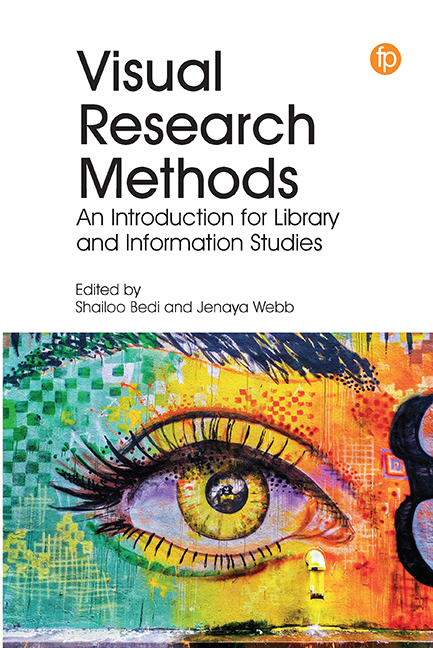Introduction: An Invitation to Visual Research Methods
Published online by Cambridge University Press: 07 November 2020
Summary
The idea behind this book is a simple one: to share our passion for visual research methods with our colleagues in libraries and information studies. We begin with a story, Shailoo's reflection about her inaugural experience with visual research methods, a photo-narrative study at the University of Victoria Libraries.
In 2016, I launched a visual research study at the University of Victoria Libraries. I had never conducted visual research before and I had only just discovered visual research methods in my doctoral studies in education. It was not until I had the opportunity to work with a consultant on library space planning that I thought about conducting a visual study, in this case, using the photo-narrative method. I wanted to know: How are students using the library space? How do they shape or reshape the spaces? What type of learning goes on in the library space? What is missing from the space and design that might impact their learning or general experience of the space?
Promoting the study with a catchy advertisement slogan – ‘Let your pictures tell the story’ – I recruited ten participants. This may not sound like a lot, but it yielded 314 minutes of interview time and 237 photos (despite my request for only 10 to 12 images per student).
What surprised me most was the number of international students who took part. Six out of the ten students were international students who spoke English as an additional language. This group included Li, from China, and Priyanka, from India. I share their stories here with their first names and photos printed with permission. Li, a graduate student, featured windows in every photo she took. She also featured herself in many of her photos, sitting at a carrel with large windows beside her or looking out a window from the comfort of an armchair (Figures 0.1 and 0.2 on the following pages). When we met for the interview, I asked her about the windows that were so prominent in her images. She commented,
I did my undergraduate degree in China. My university was a large urban university. Many students attended that school.
- Type
- Chapter
- Information
- Visual Research MethodsAn Introduction for Library and Information Studies, pp. xvii - xxviiiPublisher: FacetPrint publication year: 2020



